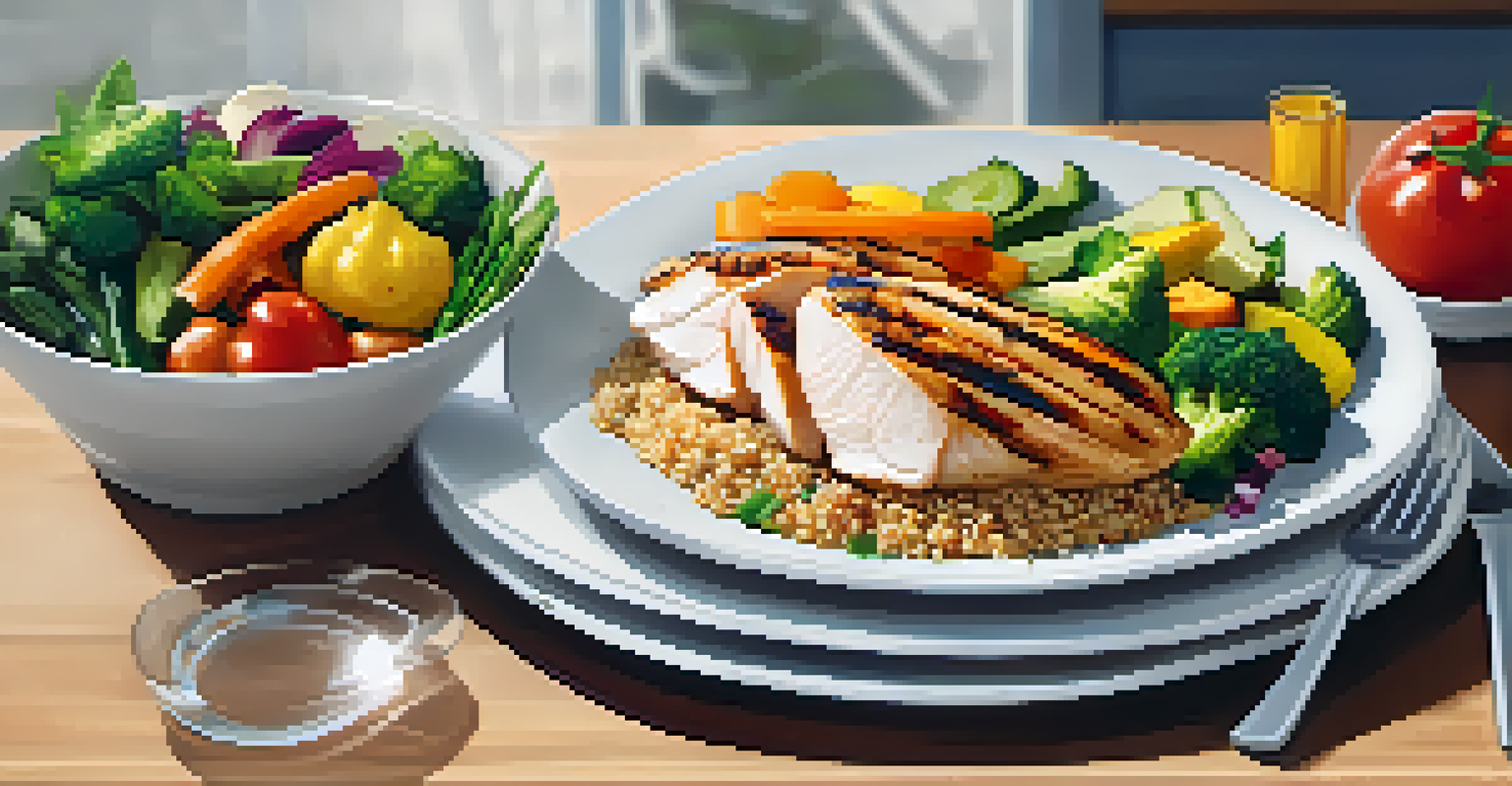Calisthenics: The Ultimate Guide to Bodyweight Bodybuilding

What is Calisthenics and Why It Matters
Calisthenics refers to a form of exercise that uses your body weight for resistance. This means no heavy weights or machines are needed—just you and your determination! Many people love calisthenics because it can be done anywhere, from your living room to a park.
Strength does not come from physical capacity. It comes from an indomitable will.
This form of training emphasizes functional movements, which improve strength, flexibility, and endurance. Think of it as building a strong foundation for your body. With calisthenics, you not only build muscle but also enhance your overall physical health.
Moreover, calisthenics promotes a mind-body connection, encouraging better awareness of your movements. This can be particularly empowering for those who might feel intimidated by traditional gym settings. So, let's dive into why calisthenics could be the perfect fit for your fitness journey!
The Benefits of Bodyweight Training
One of the major benefits of bodyweight training is its accessibility. You don’t need a gym membership or fancy equipment to get started. Just a little space and your body are all you need to kick off your workout routine.

Additionally, calisthenics helps to build functional strength, which is the kind of strength that translates into everyday activities. For instance, exercises like push-ups and squats mimic movements we perform in daily life, making them incredibly practical.
Calisthenics: Accessible Fitness
Calisthenics relies on body weight for resistance, making it an accessible workout option that can be done anywhere.
Another advantage is that bodyweight exercises can be easily modified. Whether you’re a beginner or an advanced athlete, there’s always a variation that suits your fitness level. This adaptability keeps your workouts interesting and aligned with your progress.
Essential Calisthenics Exercises to Get Started
If you're new to calisthenics, starting with fundamental exercises is key. Push-ups, pull-ups, squats, and planks are fantastic places to begin. These exercises target multiple muscle groups and help build a solid foundation for more advanced movements.
The greatest wealth is health.
For instance, push-ups engage your chest, shoulders, and triceps, while pull-ups focus on your back and biceps. Incorporating these exercises into your routine can enhance overall strength and endurance.
As you progress, you can explore variations like one-arm push-ups or pistol squats. These advanced moves not only challenge your strength but also improve your balance and coordination, making your workouts even more dynamic.
Creating a Calisthenics Workout Plan
Designing a calisthenics workout plan starts with setting clear goals. Whether you aim to build muscle, lose weight, or improve endurance, knowing your objectives will guide your routine. For example, if muscle gain is your goal, focus on progressively increasing the difficulty of your exercises.
A typical calisthenics workout might include a combination of upper body, lower body, and core exercises. Balancing these components ensures a well-rounded routine that prevents overtraining any specific muscle group.
Build Functional Strength
Bodyweight training enhances functional strength through exercises that mimic everyday movements, improving overall physical health.
Consider structuring your workouts into sets and reps, such as performing three sets of ten push-ups. Tracking your progress can keep you motivated and help you see improvements over time, making your fitness journey even more rewarding.
Common Mistakes to Avoid in Calisthenics
One common mistake in calisthenics is neglecting proper form. Without the right form, you risk injury and may not reap the full benefits of the exercises. Always prioritize quality over quantity—performing fewer reps with good form is far more effective than doing many with poor technique.
Another pitfall is skipping warm-ups and cool-downs. These are crucial for preparing your muscles and aiding recovery. Just like a car needs a warm-up to run smoothly, your body does too!
Lastly, be mindful of progression. It’s tempting to jump into advanced exercises too quickly, but building a solid foundation is vital. Gradually increasing the intensity and complexity of your workouts will lead to sustained results and prevent burnout.
Nutrition for Calisthenics Success
Nutrition plays a pivotal role in your calisthenics journey. Eating a balanced diet rich in protein, healthy fats, and complex carbohydrates fuels your workouts and aids recovery. Think of your body as a machine—fuel it well, and it will perform better.
Hydration is equally important. Water helps regulate body temperature and keeps your muscles functioning optimally. Make sure to drink plenty of water before, during, and after your workouts to stay energized.
Importance of Proper Form
Maintaining proper form in calisthenics is crucial to avoid injury and maximize the effectiveness of each exercise.
Lastly, consider timing your meals around your workouts. Eating a light snack with carbohydrates and protein before exercising can enhance performance, while a nutritious meal afterward supports recovery and muscle growth. Balance is key to sustaining your energy levels.
Incorporating Flexibility and Mobility Training
Flexibility and mobility are often overlooked in strength training, but they are vital components of a well-rounded fitness routine. Incorporating stretching and mobility exercises into your calisthenics practice can improve your range of motion and overall performance.
For instance, dynamic stretches before your workout warm up your muscles and prepare them for action. On the other hand, static stretches post-workout help with recovery and flexibility. Think of them as the bookends to your workout, enhancing the overall experience.

Additionally, there are specific calisthenics movements that promote flexibility, such as the deep squat and the bridge. Regularly practicing these not only helps with your calisthenics but also contributes to overall body functionality and injury prevention.